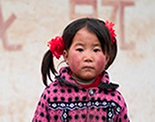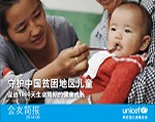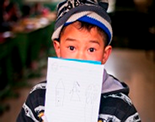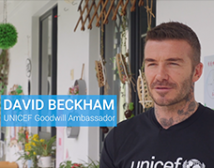Jeongmin Lee, Child Protection Officer, UNICEF Philippines (on assignment with UNICEF China)
Based in the Philippines for the past two years, I became quite familiar with UNICEF child protection emergency response programmes, including the Child-Friendly Space (CFS). It is one of the most widely adopted forms of child protection interventions in emergencies, either in armed conflict or natural disaster. It offers safe access for children to psychosocial support through recreational or art activities and learning. In emergency situations, a Child-Friendly Space typically is set up in a large tent and also functions as a hub for multi-sector service delivery and referral of children in need of urgent care.
During my short assignment in China, part of my work was documenting the Child-Friendly Space pilot experience in China, which is unique in the sense that it started from an emergency response but has been expanded to non-emergency areas as a centre for child welfare and protection services. With support from the National Working Committee for Children and Women (NWCCW), Child-Friendly Space was first introduced to China as part of the emergency response to the 2008 Sichuan earthquake. Due to the success of the Child-Friendly Space programme during and after the 2008 Sichuan earthquake, the model was adopted as a good practice by the Government of China, leading to massive replication nationwide and supported by national policy.
My field visit to the Child-Friendly Spaces in Guangxi Zhuang Autonomous Region offered great opportunity for me to examine the model in a non-emergency setting. For two days in April, we visited a rural Child-Friendly Space near Liuzhou city and one in an urban area of Nanning city to observe the activities and discuss programme strategies and complications.
Both sites were sharing space with the community culture centre. The playroom for children was divided into a play area with toys and a reading section with books and tables for writing and drawing. Musical instruments were visible. I was delighted by the pre-school children playing together in the room, accompanied by their parents. But I wondered where are the older children, especially considering that the model was designed for children up to 18 years? There was a separate meeting room for hosting events, such as community awareness or capacity building activities. Both rooms were clean and the facilities seemed quite well managed by the staff.
 Courtesy of the Guangxi Working Committee for Children and Women Courtesy of the Guangxi Working Committee for Children and Women
UNICEF staff members hold a meeting with members of the Child Protection Committee at the Child-Friendly Space in Longmei community in Liucheng County, Guangxi Zhuang Autonomous Region, on 15 April, 2015. |
After meeting with members of the Child Protection Committee, the network for consultation and coordination of the multi-sector child welfare and protection service delivery in each Child-Friendly Space, two important challenges emerged: (i) the low participation of older children (due to overlap in opening hours with school hours and the lack of activities targeting different groups of children) and (ii) the weak functioning of the Child Protection Committee (due to insufficient training of multi-sector service providers on identifying and handling child protection cases, with clear referral protocols).
Although older children's late school hours were indicated as a complication, student representatives remarked that if there were useful or interesting activities in the Child-Friendly Space, they would visit every Friday afternoon or even on the weekends. The issue seemed to be more about designing good activities for children.
 Courtesy of the Guangxi Working Committee for Children and Women Courtesy of the Guangxi Working Committee for Children and Women
Children play at the Child-Friendly Space in Hongxing community in Yongning District, Nanning City, Guangxi Zhuang Autonomous Region, on 16 April, 2015. |
A common concern of all the Committee members was providing targeted support to migrant children and children left behind by parents (who had migrated elsewhere for work) who are more in need of care and support. Teachers also acknowledged lower performance of these children in school, often times leading to their dropping out and psychosocial problems. The added value that a Child-Friendly Space can provide a community is well-structured activities for psychosocial support and life skills development for the most disadvantaged children.
Establishing a mechanism for multi-sector child protection consultation and service coordination was not an easy task in the Philippines, but it was not elusive. What the Committee members I met with are experiencing in Guangxi seems like a learning curve only. The acknowledgement of little awareness and capacity on child protection and the eagerness of service providers to learn indicate a positive future for the Committee and the Child-Friendly Space model.
That most of the Committee members, including representatives of judicial authorities and public security, teachers, health workers, Women's Federation staff, social workers, older children and volunteers, all gathered to discuss children's issues seemed already a good starting point for future child welfare and protection work in the community.
When I stepped out of the room after the meeting, I saw the young policeman who happened to be the only man in the discussion holding a small child in his arms with a big smile on his face. I told him that he will be a good father when his time comes, and it reminded me once again that support from men and fathers is as important as from women and mothers for promoting children's well-being and protecting them from violence, abuse and neglect.






























